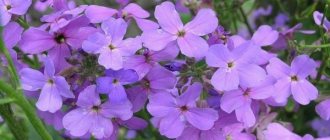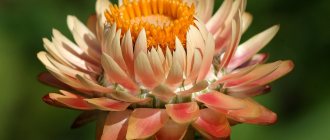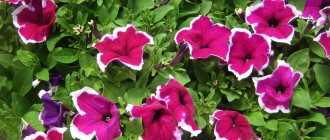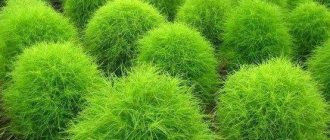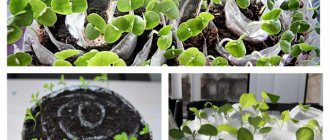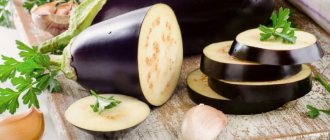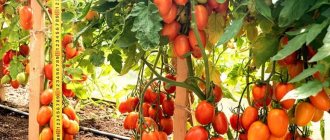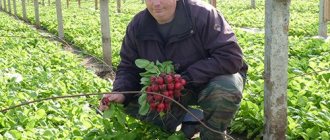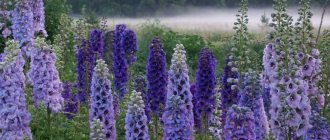Author: Natalya Category: Garden plants Published: February 24, 2019Republished: February 24, 2019Last edits: November 03, 2020
- Growing conditions
- How and when to collect seeds
- Echinacea purpurea
- Beneficial features
flower (lat. Echinacea) belongs to the genus of perennials of the Asteraceae, or Asteraceae, family, which includes 9 species. Echinacea is native to eastern North America. From Greek, the name of the plant is translated as “hedgehog, or prickly, like a hedgehog.” The most famous species in the genus is Echinacea purpurea, also known as rudbeckia purpurea, which is widely used in folk and traditional medicine, as well as in ornamental gardening. Echinacea was first described by Carl Linnaeus in 1753, assigning it to the genus Rudbeckia, but forty years later Echinacea was separated into a separate genus because noticeable differences were discovered between the two plants.
Peculiarities
If you are looking for a bright, unpretentious plant that will amaze you with its richness of colors, try growing echinacea in your garden. Outwardly, its flowers are similar to chamomile, but much larger, have a variety of shades: red, pink, yellow, etc. All varieties of echinacea, without exception, are notable honey plants. They will attract beautiful butterflies and buzzing bees to your yard. Which will definitely “visit” other plants.
Echinacea flower
- Echinacea is a flowering perennial of the Asteraceae family. An indigenous inhabitant of North America, uniting about 10 species.
- Translated from Greek. the name of the flower means “prickly, like a hedgehog.”
- The most popular is Echinacea purpurea or rudbeckia. It is used in ornamental gardening and medicine. And not only popular, but also official.
- Echinacea perennial was first described in 1753 by Carl Linnaeus.
- The shoots are erect, rough, reaching 150 cm.
- The leaves are oval, with a serrated edge and long petioles.
- The inflorescence is a basket consisting of tubular mini-flowers, painted in brown-red, dark red tones. The marginal flower is reed, it can be red, pink, etc.
Description of the plant
Thus, Echinacea is a herbaceous perennial.
The plant is tall, as it can reach a height of 150 cm. The leaf blades are not the same everywhere. At the base of the root, large oval-shaped foliage is located on petioles. The foliage along the stem is sessile and lanceolate in shape.
Photo of echinacea
The inflorescences are large baskets, the central part of which consists of numerous tubular flowers and edging petals of red, pink, white, and brown colors. After withering, an achene with four sides is formed in place of the flower.
Planting in open soil
This part of the article will discuss planting echinacea with your own hands in open ground. Planting is possible both in autumn and spring. It is preferable to do this immediately after division. Growing echinacea from seeds is also possible, but it is suitable for rudbeckia species. Those who intend to propagate hybrid varieties will have to use vegetative methods.
Echinacea yellow
When choosing a location, pay attention to sunny areas with nutritious soil. It should be slightly alkaline, neutral. Soil that is too wet and contains a lot of sand is definitely not suitable. If the soil is acidified, the problem can be easily corrected by adding lime.
So, if you have chosen the Echinacea purpurea variety, planting and care will be as follows:
- To plant seedlings, make small holes (5 cm) with a distance of 30 cm between them.
- Place compost on the bottom, plant echinacea, and water each sprout.
- If the seedlings were previously grown in a container, the planting technology will be different. Firstly, a larger planting hole (40 cm). Secondly, it is filled not just with compost, but with its mixture with soil and sand (all parts in equal quantities). Then the rudbeckia is transferred into the hole along with an earthen lump. The depth should be the same as in the container in which the representative of the Asteraceae family grew previously.
How to collect echinacea seeds
As the season comes to an end, it will be time to collect the Echinacea seeds from the bush. Dry weather is selected for this action. The maturity of the seeds can be determined by the dark core of the inflorescence. The seeds are removed, the tubular flowers are removed and sent to dry. Echinacea seeds do not retain their ability to germinate for a long period of time. Therefore, it is recommended to plant them in the fall or next spring.
Photo of collecting Echinacea seeds
Useful articles:
How to choose good flower seeds How to test seeds for germination
What should care be like?
Before caring for Echinacea, read the basic rules. Despite the apparent simplicity, you still have to follow certain recommendations:
Red flowers
- Watering. Do not skimp on water, water the plants generously every few days, as they love moisture very much. In summer, watering is carried out in the evening, when the heat has already subsided.
- Weeding. The area is kept clean and tidy. Weeds are removed in a timely manner and the soil is loosened to improve air exchange.
- Feeding. Wood ash is preferred for the Echinacea plant. It is applied from the 2nd year of growth, after mixing with compost. The result becomes noticeable after 1-2 months. Blooms abundantly, leaves are juicy.
When Echinacea purpurea has bloomed, the inflorescences are cut off for further cultivation from seeds. They do this together with parts of the escape.
Echinacea: plant care in the garden
Echinacea is a moisture-loving plant,
which should be provided with regular and abundant hydration. It is better to carry out the procedure in the evening. Regular loosening of the soil will allow for preventive measures against the growth of weeds.
Photo of echinacea in the garden
Advice!
In the second year of growth, this plant can be fed with compost and wood ash. These measures will allow the echinacea to bloom more abundantly, and its petals will acquire a rich shade.
The plant is fertilized twice during the season.
The first time this is done in the spring, and the second time immediately after the buds wither.
BEAUTIFUL FLOWERS!
Juvenile or stone rose Flower Colchicum Chionodoxa
Vegetative propagation or seeds – which is better?
Most gardeners prefer to propagate the plant by vegetative division. In April or October, an adult plant is carefully removed from the soil (it must be at least 4-5 years old). Divide into parts so that each has 3-4 buds. The further planting scheme is nothing different from when we prepared echinacea for seedlings.
If you plan to propagate the species rudbeckia, it is preferable to do it with seeds. They are quite large and are sown in the ground in the spring, when the air has warmed up to 13-14 degrees. Or you can sow in boxes or containers, immersing them 5 mm and moistening the seeds with a sprayer.
Echinacea coral reef
Do not be discouraged if your terry echinacea does not germinate in the first weeks. Typically the plant takes 5-6 weeks. When the young specimens grow up and become stronger, they can be planted on the site. Further care is the same as for adult seedlings: watering, removing weeds, loosening.
When to expect flowering if Echinacea purpurea seeds are germinated? This usually occurs in the second year of life. In the first summer, rudbeckias grow leaf rosettes, the height of which varies from 15 to 20 centimeters.
Planting Echinacea with seedlings and rhizomes
The best time to plant Echinacea rhizomes is early spring. In warm regions, autumn planting is also practiced - in September.
When planting seedlings or seedlings with a closed root system, do not bury the plants - place them so that they are at the same depth as they grew in the pot.
When planting rhizomes, make sure that the root collar remains level with the soil surface. Spread the roots in the planting hole, carefully cover with soil, lightly compact and water well. Mulch the plantings with compost.
Echinaceas grow quickly. When planting, take into account the size of an adult plant to choose the correct distance (from 40 to 60 cm between bushes). In flower beds with dense plantings, there is a high risk of an outbreak of fungal diseases, even in such unpretentious and very disease-resistant flowers as echinacea.
What is it sick with?
Echinacea and rudbeckia are plants that have strong immunity to diseases and many pests. Problems usually arise if the gardener did not care for the flower correctly. Due to increased humidity and drought, accompanied by temperature fluctuations, powdery mildew appears on the leaves. Try “feeding” echinacea with nitrogen fertilizers - and the result will be the same. As soon as you notice a whitish coating, spray the plant with Bordeaux mixture. By the way, colloidal sulfur will also work.
In an untreated state, it is still possible to cure the fungal diseases septoria and cercospora. It is enough just to cut off all the diseased areas. But if the plant is heavily infected, it will have to be destroyed. Or try to save it with a fungicidal drug, but there is little chance.
Bugs and slugs can also feast on the succulent leaves of rudbeckia. Insect pests are exterminated with insecticides. For example, Actellik, Karbofos. Slugs are collected by hand.
Echinacea propagation by cuttings
This is a difficult method to propagate a plant, which is not always successful. Experiments often end with the cuttings drying out. But if you decide to try to propagate the plant by cuttings, then do it in June. Choose healthy and strong stems.
Cut the cuttings so that each leaves two leaves. Wet the sections with a root growth stimulator. Then plant the cuttings in nutritious and moist soil. The room temperature should be between +22 °C and + 25 °C.
If new leaves begin to appear on them, it means that roots have formed. After two months, the cuttings will finally take root and become full-fledged plants. Replant them in open ground to a permanent location.
Common varieties
There are 9 species of the plant found in the wild, but breeders cultivate only hybrids of purple coneflower. The perennial grows up to one meter, the reed flowers reach 4 cm in diameter. Popular varieties include Granatstern, Sonnenlach. By crossing paradoxical, purple coneflower, the Sunset series was obtained.
orange bud
It is distinguished by large inflorescences and a pleasant smell of flowers. The color is very refined: mustard, strawberry, peach. Also in our country, Echinacea Red Hat, White Swan, Flamingo and Mantle are very popular.
Types and varieties of Echinacea with photos and names
In the wild, you can find 9 different types of Echinacea, but gardeners most often cultivate hybrids and varieties of Echinacea purpurea.
Echinacea purpurea
The height of this perennial is about 1 meter. Rough shoots are straight. The basal leaf plates are collected in a rosette; they have a broad oval shape, sharply tapering to long winged petioles. The stem leaf plates are alternate, rough and sessile; they have a lanceolate shape. The inflorescences are baskets, in the middle of which there are tubular flowers of a brown-red color, and along the edges there are pink-purple reed flowers, which reach a length of about 40 mm, they are pointed towards the apex. The most popular varieties:
- Granatstern . The height of the bush is about 1.3 m. The baskets reach 13 centimeters in diameter. Reed flowers are purple in color and slightly pubescent, and they have 2 teeth at the top. And the tubular flowers of brown color form a convex hemisphere, reaching 40 mm in diameter.
- Sonnenlach . The bush reaches a height of 1.4 m. The inflorescences of the basket reach 10 centimeters in diameter, they include lanceolate reed flowers of a dark red color, the length of which is about 35 mm, and at the tops they have 2 or 3 cloves, as well as tubular flowers that create a convex hemisphere of brown color.
Echinacea purpurea
Echinacea x sunset
This is a series of hybrids that were obtained using Echinacea paradoxa and Echinacea purpurea, which were the result of the work of R. Scola. These hybrids combine the best aspects of such plants: they have very large inflorescences, highly branched shoots, a wonderful smell, curved petals and exquisite colors such as mustard, strawberry, mango or peach. The tubular petals are painted in henna color. Thanks to breeders, varieties have emerged whose baskets are colored white, pink, light red, purple, orange and yellow. The most popular varieties of garden echinacea are:
- Julia . Relates to the Butterfly Kisses series. The height of the dwarf bushes does not exceed 0.45 m. Rich orange baskets bloom in the first weeks of summer, and they do not disappear until the end of the season.
- Cleopatra . This variety got its name after the spectacular yellow butterflies. The rich yellow inflorescences reach 75 mm in diameter, the reed flowers are placed horizontally, which is why the baskets look like suns in a picture drawn by a child.
- Evening Glow . The inflorescences consist of yellow-colored reed flowers, on which there is an orange stripe of a light pink hue, and in their middle there are tubular flowers that act as a dark-colored cone.
- Cantaloupe . The baskets have a melon color. The reed petals are arranged in 2 rows and look like an orange-pink frill. And the shaggy hemisphere in the middle of the flower consists of tubular flowers of a darker color.
- Action Flute . This is a rather unusual variety. Yellow-golden reed flowers are twisted into tubes; in the middle there are tubular flowers of mustard green color. This variety is related to the Let's Buggy variety series; these plants are distinguished by their resistance to drought, as well as their unpretentiousness in care.
- Double Scoop Cranberry . This drought-tolerant variety is very easy to care for. Cranberry-colored baskets are very showy and attractive to butterflies. They are recommended to be used when making bouquets.
Benefit
Grass contains almost half of the elements from the periodic table. It contains a lot of tannins, flavonoids, and organic acids. The rhizome contains essential and fatty oils, many resins and unique enzymes. Tinctures and decoctions prepared on the basis of Echinacea have a powerful antifungal, antiviral, and antimicrobial effect. They are able to heal wounds and strengthen the immune system.
They are prescribed to people with physical or mental fatigue. Accelerate the healing of burns, increase potency, improve blood clotting - the list of healing properties can be continued for a long time.
By the way, echinacea tinctures and extracts are widely used not only in the post-Soviet space. For example, in Germany they are used in the complex therapy of chronic tonsillitis and tonsillitis. According to Russian professor S. Tomilin, the healing properties of the plant are comparable to ginseng.
Before starting therapy, discuss it with your doctor. The fact is that medications based on echinacea have a number of contraindications:
- Individual tolerance - may cause allergies.
- Pregnancy, lactation period.
- Diseases such as multiple sclerosis, leukemia, open form of tuberculosis.
Beneficial properties of Echinacea
Echinacea herb contains polysaccharides, flavonoids, tannins, saponins, hydroxycinnamic and organic acids, phytosterols, resins and essential oils. The rhizome contains essential and fatty oils, resins, enzymes, macroelements in the form of potassium and calcium, and microelements selenium, silver, zinc, manganese, molybdenum and cobalt.
Products made from this plant have antimicrobial, antifungal, antiviral and wound-healing effects; they are used to strengthen the immune system, as well as for mental or physical fatigue. These products are decoctions, extracts, juice and infusions of Echinacea.
The tincture of this plant helps to increase potency and rapid healing of burns. Juice squeezed from fresh flowers is used in alternative medicine to treat wounds, and when taken internally, an acceleration of blood clotting is observed.
Echinacea purpurea is popular in a large number of countries. In Germany, remedies from this flower are used in the treatment of tonsillitis, sore throat, chronic sepsis and other inflammatory diseases. S.A. Tomilin is a Russian professor who claimed that Echinacea purpurea has the same healing properties as ginseng.
Below are recipes for echinacea remedies that, if necessary, can be made at home:
- Tincture . Take a 500 ml glass jar and fill it to the top with freshly cut echinacea flowers. Then fill them with vodka and close the jar with a twist lid. Place the container in a dark place for 40 days. Then the tincture is poured into another container. It is drunk 15 drops, which are dissolved in 1/3 glass of tea or water, on an empty stomach 30 minutes before a meal. It helps with fatigue, depression and infectious disease.
- Root decoction . 300 milligrams of water must be combined with 1 large spoon of chopped echinacea roots. The mixture is placed in a water bath and boiled for 30 minutes. After the broth has cooled, it should be strained. Drink it 3 or 4 times a day, 1–2 large spoons. It helps with colds, chronic fatigue and acute infectious diseases.
Echinacea Medicinal Properties
Traditional recipes from echinacea
Echinocea decoction for the flu: you will need six flowers, crushed roots and leaves, one tablespoon each. Mix them in a saucepan and pour three cups of boiling water. Leave the broth for forty minutes. Take one glass three times a day.
Echinacea tincture for depression: take 10 grams. crushed root and fill it with 100 ml of alcohol. Let the medicine sit for a day. Take twenty drops three times a day.
Echinacea tea to strengthen the immune system: pick leaves, dry and crush. You will also need fresh flowers. Pour 4 teaspoons of crushed leaves into a teapot and add 6 flowers. Pour three cups of boiling water over the mixture. Brew tea for 40 minutes. Take the medicine three times a day.
